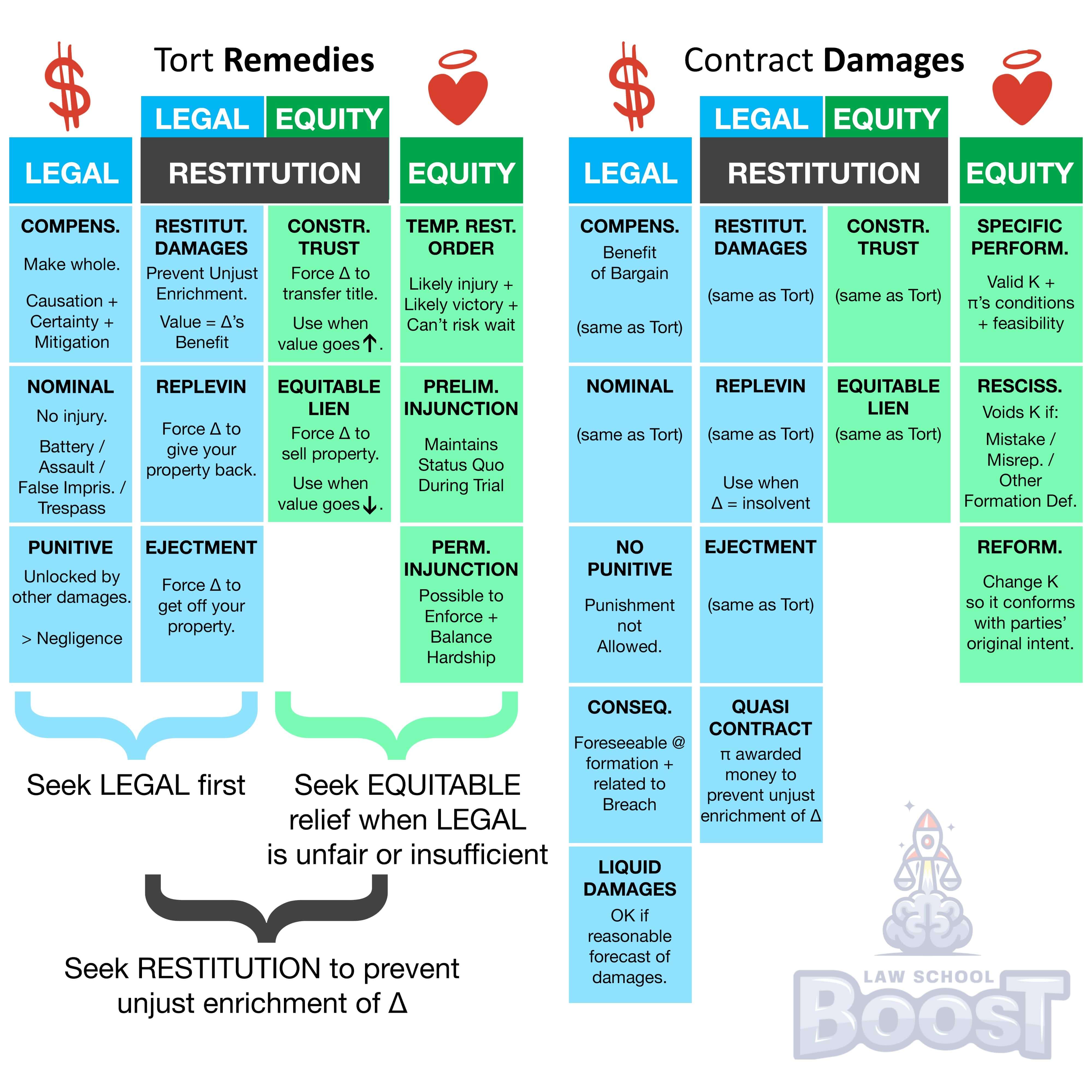🏥
Remedies • Tort - Equitable Restitutionary Remedies
REM#021
Legal Definition
Where the property value increases, the plaintiff should elect for a constructive trust (as they are entitled to the appreciation in value). In contrast, if the property value decreases, the plaintiff should elect for an equitable lien and seek a deficiency judgment for the difference owed.
When the defendant's property cannot be traced solely to the plaintiff's improperly acquired property—such as where the defendant has commingled their own property—then only an equitable lien is available as a remedy.
When the defendant's property cannot be traced solely to the plaintiff's improperly acquired property—such as where the defendant has commingled their own property—then only an equitable lien is available as a remedy.
Plain English Explanation
A constructive trust and an equitable lien are legal tools that help someone get back what they're owed. Think of them like two different tools in a toolbox, each used for a specific job.
If someone wrongfully takes your property and its value goes up, you can use a constructive trust. This means you not only get your property back but also any extra value it gained.
If the property's value goes down, you can use an equitable lien. This lets you claim the property and also ask for the difference in money that's still owed to you.
However, if the person who took your property mixes it up with their own stuff (like blending two colors of paint), you can only use the equitable lien tool. This is because it's too complicated to separate what's yours from what's theirs.
If someone wrongfully takes your property and its value goes up, you can use a constructive trust. This means you not only get your property back but also any extra value it gained.
If the property's value goes down, you can use an equitable lien. This lets you claim the property and also ask for the difference in money that's still owed to you.
However, if the person who took your property mixes it up with their own stuff (like blending two colors of paint), you can only use the equitable lien tool. This is because it's too complicated to separate what's yours from what's theirs.
Hypothetical
Hypo 1: Sam and Bob are childhood friends. Sam lends Bob a rare comic book. Over time, the comic book becomes super valuable. Bob refuses to return it. Result: Sam can use a constructive trust to get the comic book back and benefit from its increased value.
Hypo 2: Sam gives Bob a piece of jewelry to keep safe. Bob sells it and uses the money to buy a mix of stocks. The stocks lose value. Result: Sam can use an equitable lien to claim the stocks and ask Bob for the difference in money that's still owed.
Hypo 3: Sam lends Bob $1000. Bob uses it to buy a mix of things, including some items for himself. Now, it's hard to tell what was bought with Sam's money. Result: Sam can only use an equitable lien to ask Bob for the $1000 back, but can't specifically claim any of the items Bob bought.
Hypo 4: Sam lends Bob a bike. Bob returns the bike without any changes in its value or condition. Result: Neither constructive trust nor equitable lien applies because there's no change in value and no mixing of property.
Hypo 2: Sam gives Bob a piece of jewelry to keep safe. Bob sells it and uses the money to buy a mix of stocks. The stocks lose value. Result: Sam can use an equitable lien to claim the stocks and ask Bob for the difference in money that's still owed.
Hypo 3: Sam lends Bob $1000. Bob uses it to buy a mix of things, including some items for himself. Now, it's hard to tell what was bought with Sam's money. Result: Sam can only use an equitable lien to ask Bob for the $1000 back, but can't specifically claim any of the items Bob bought.
Hypo 4: Sam lends Bob a bike. Bob returns the bike without any changes in its value or condition. Result: Neither constructive trust nor equitable lien applies because there's no change in value and no mixing of property.
Visual Aids



